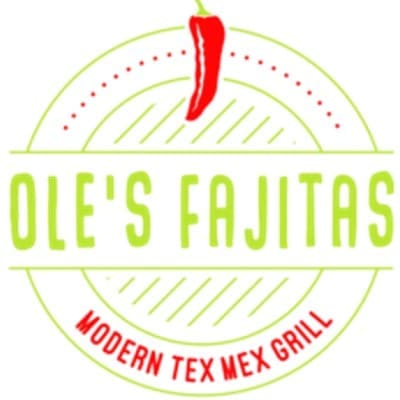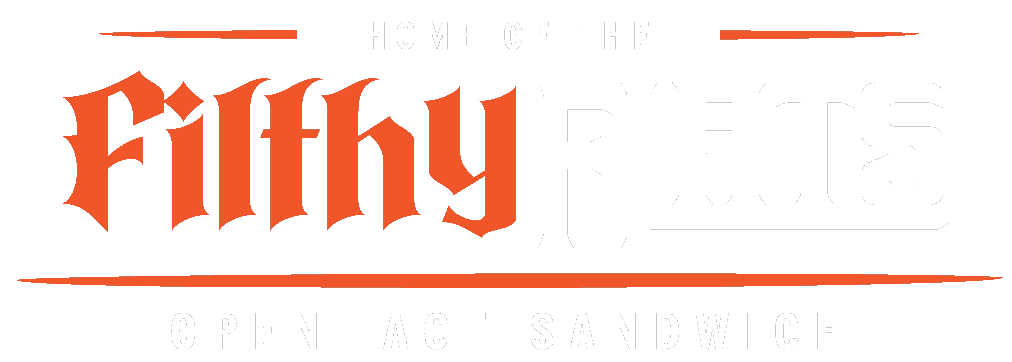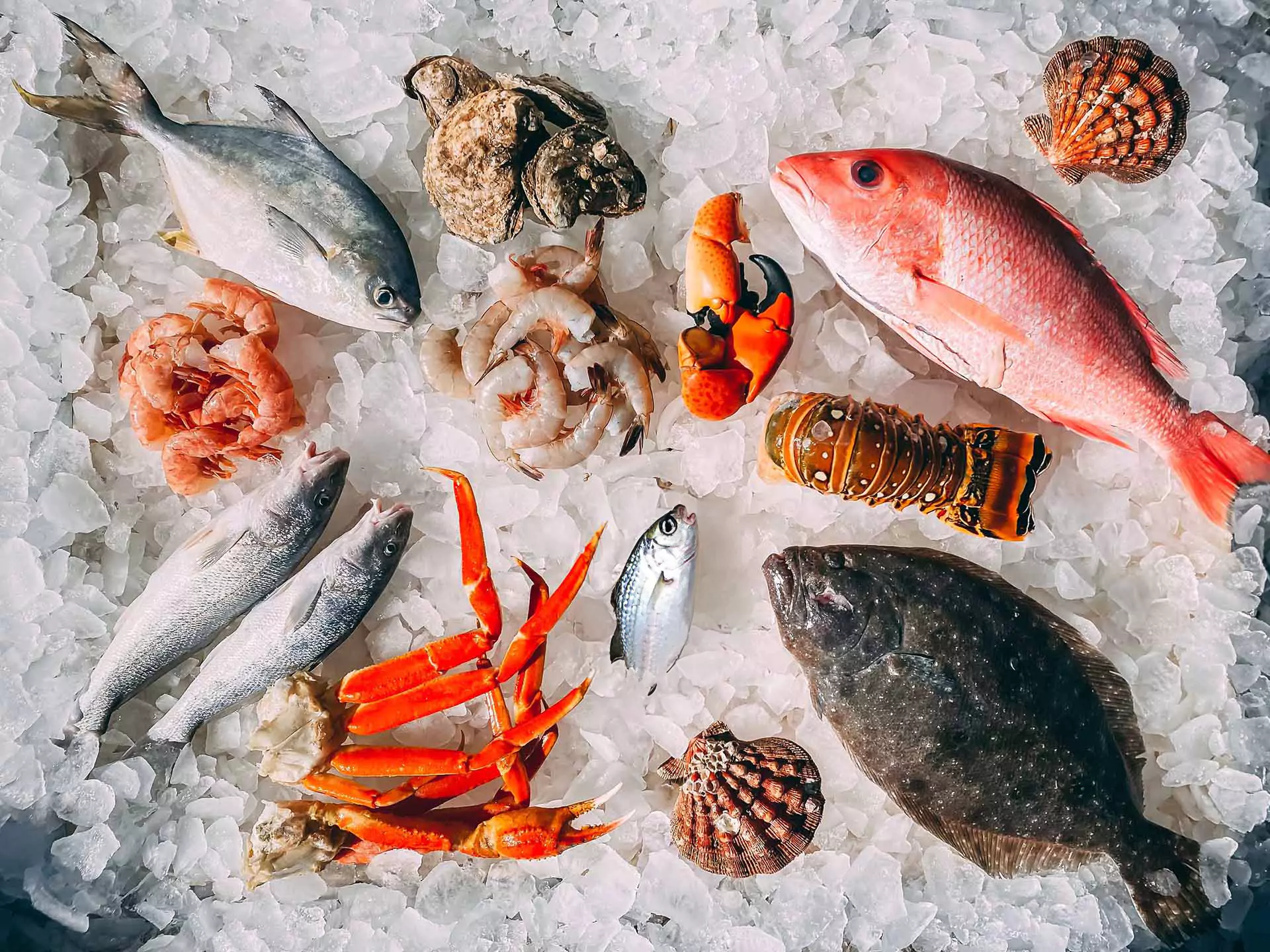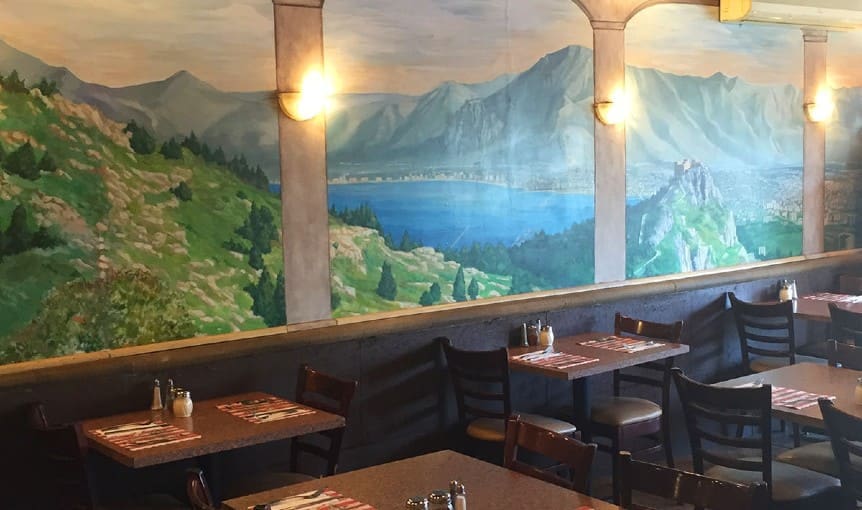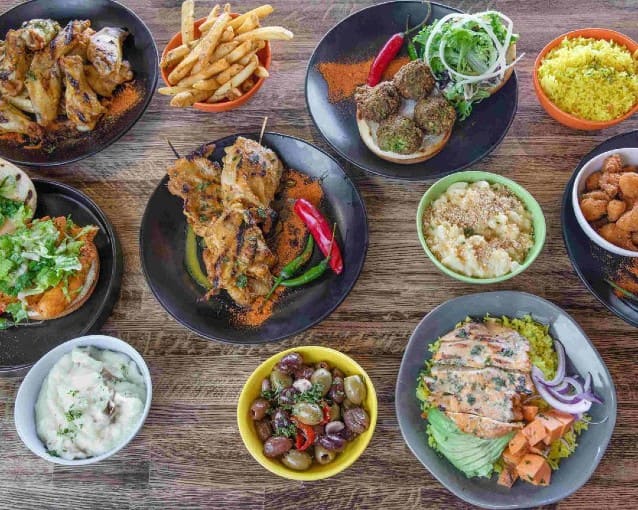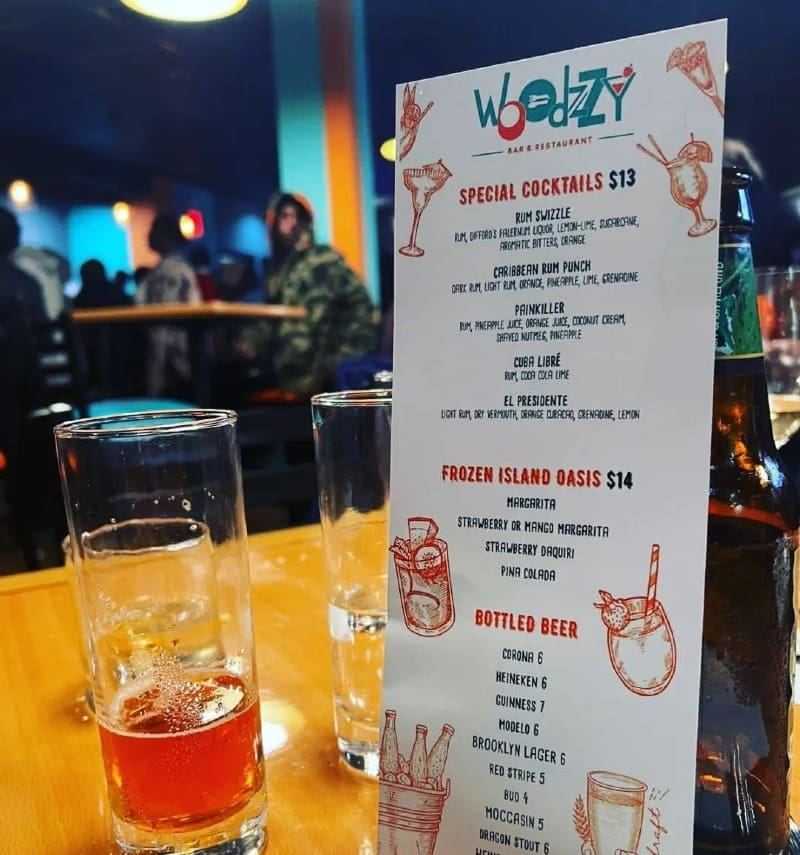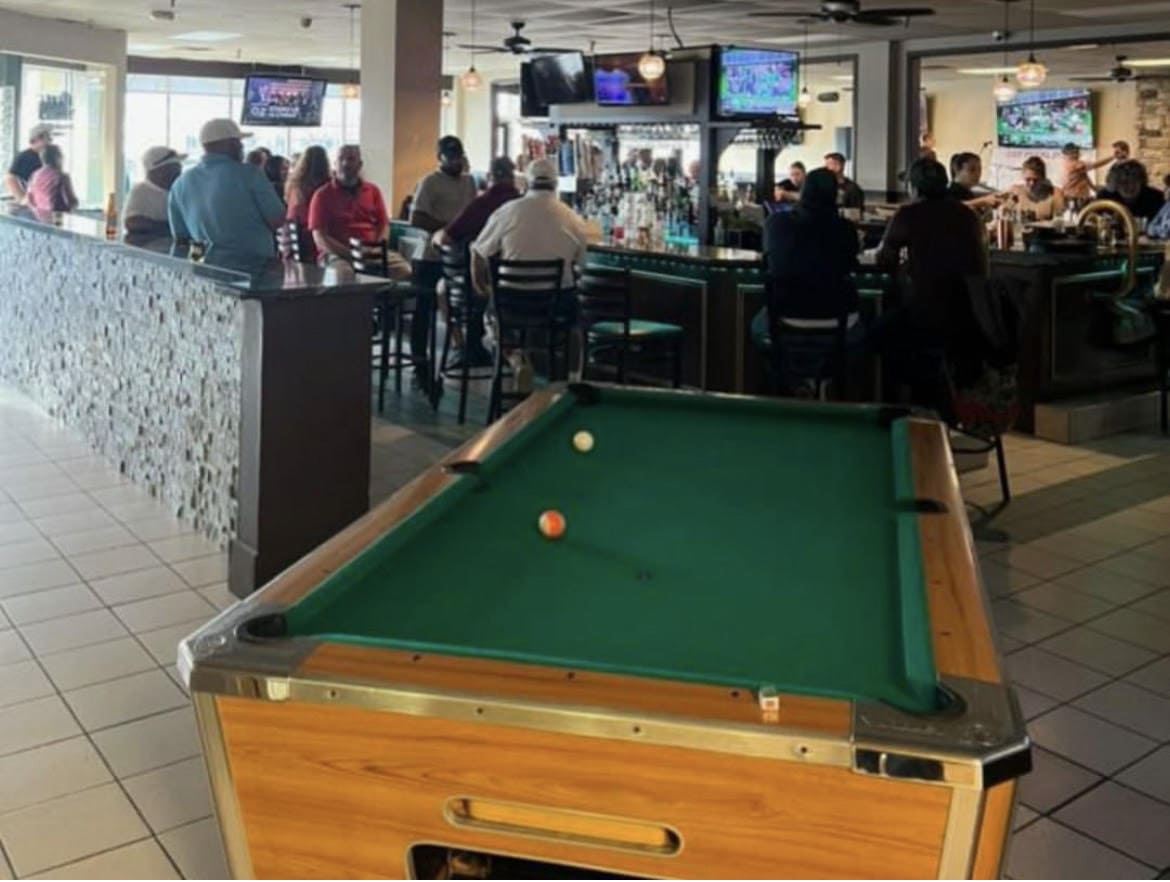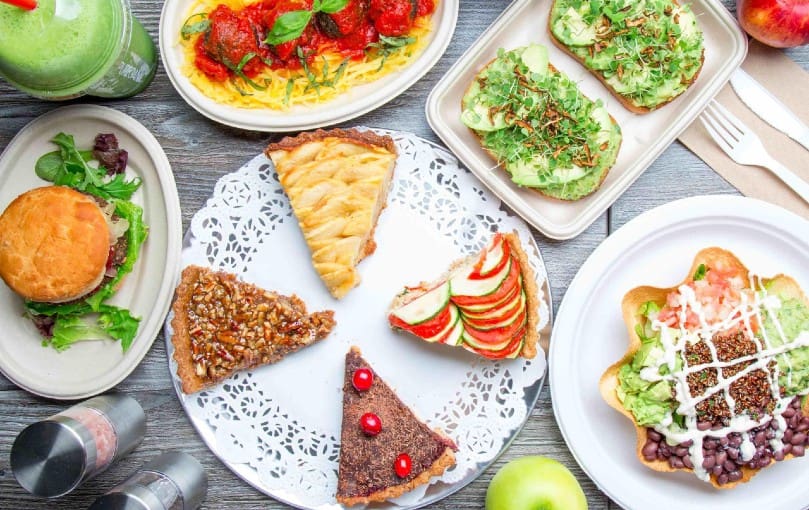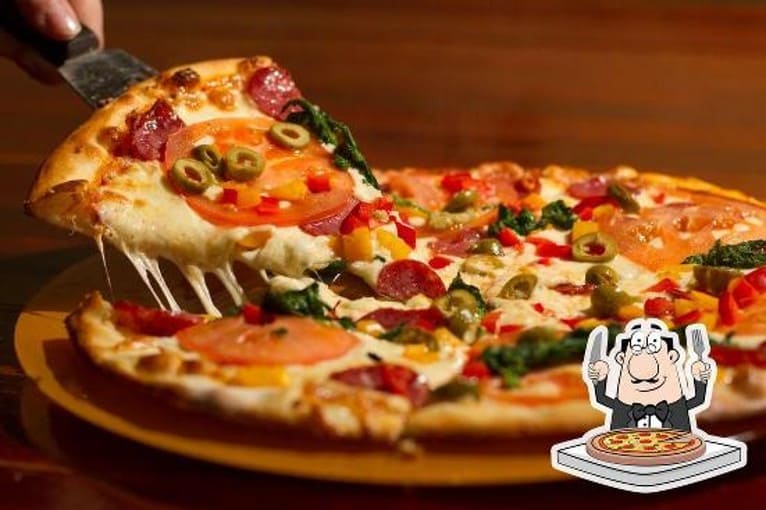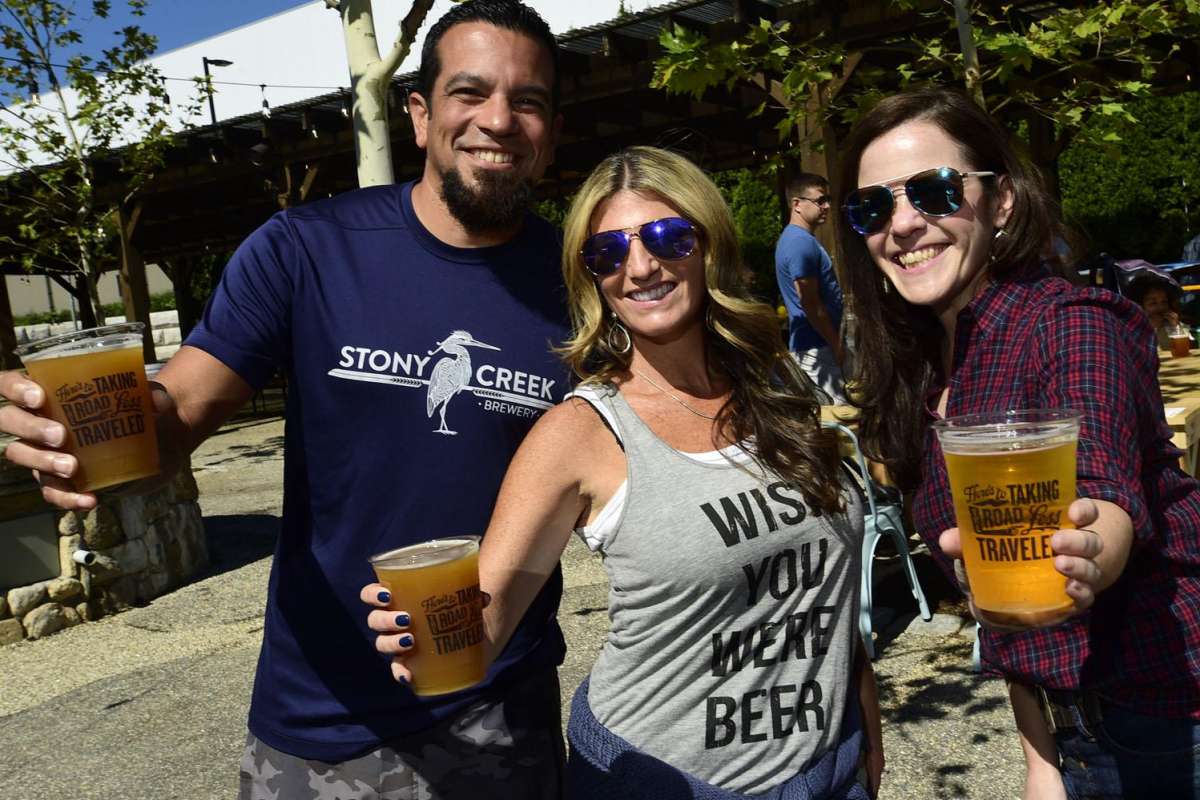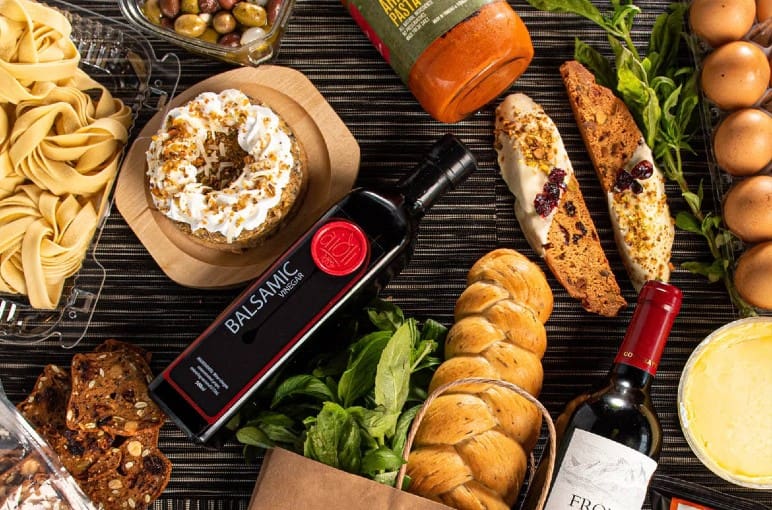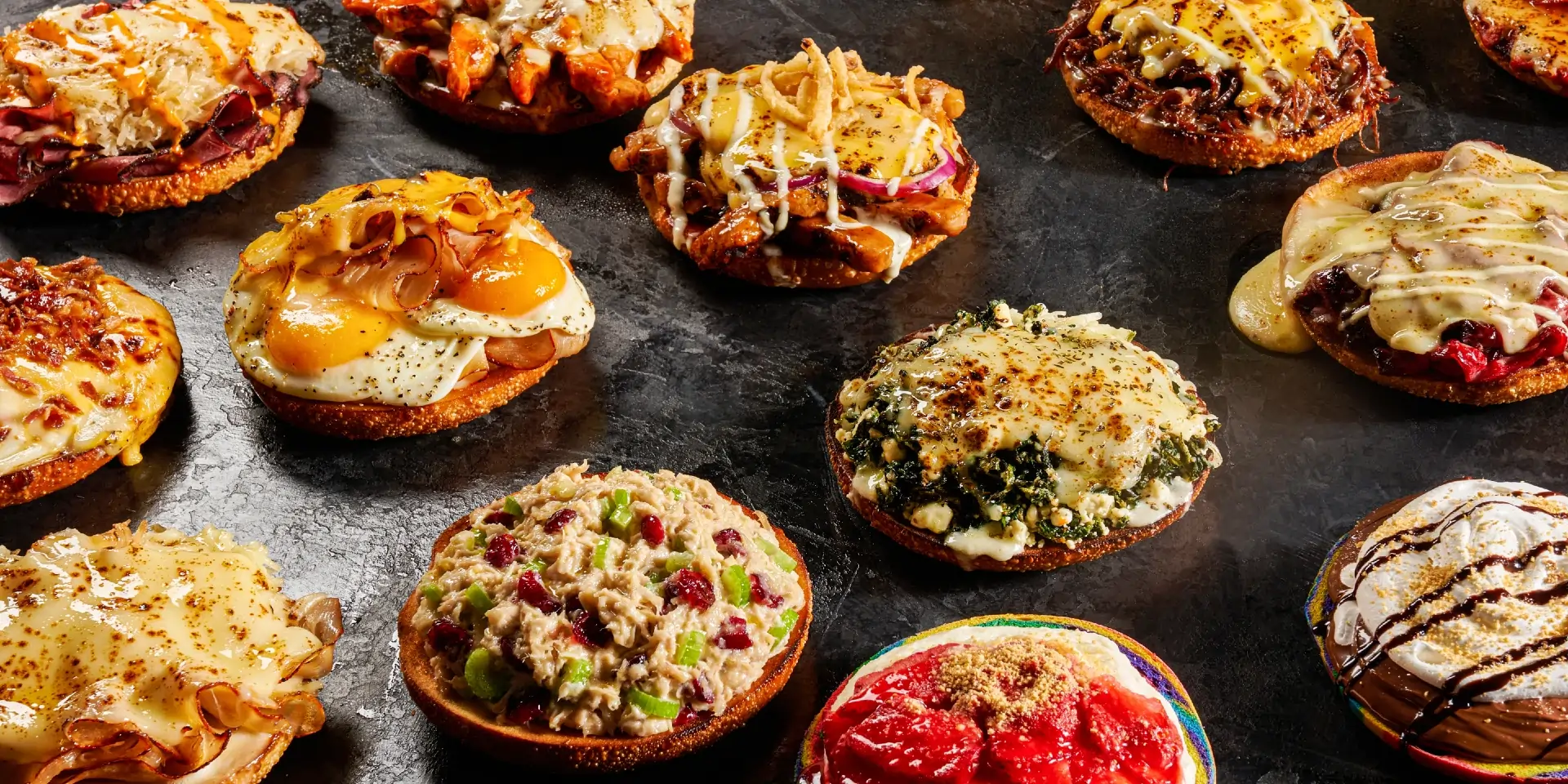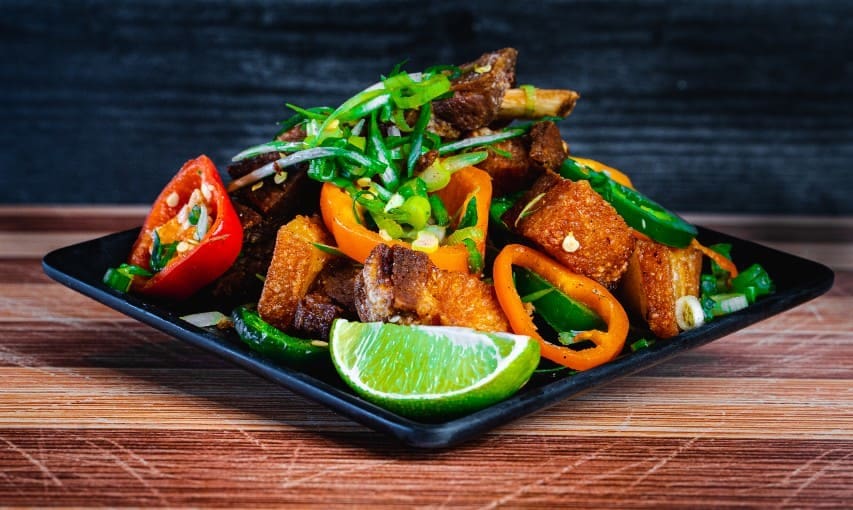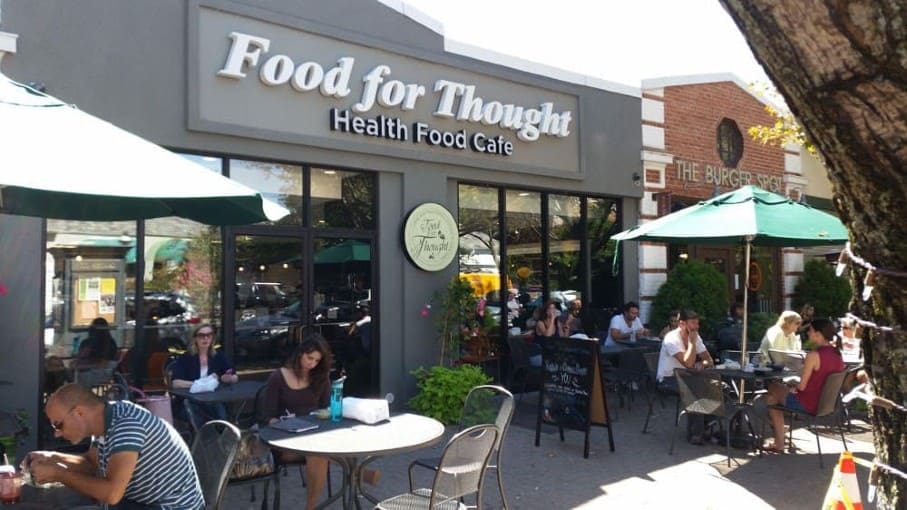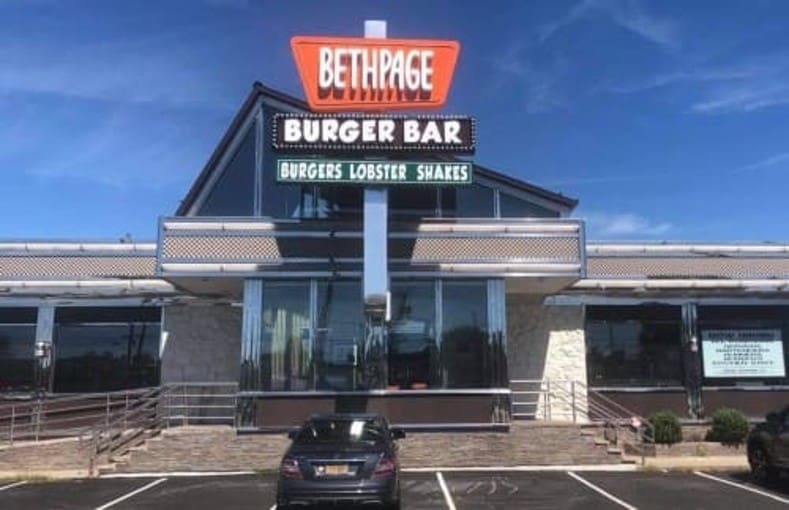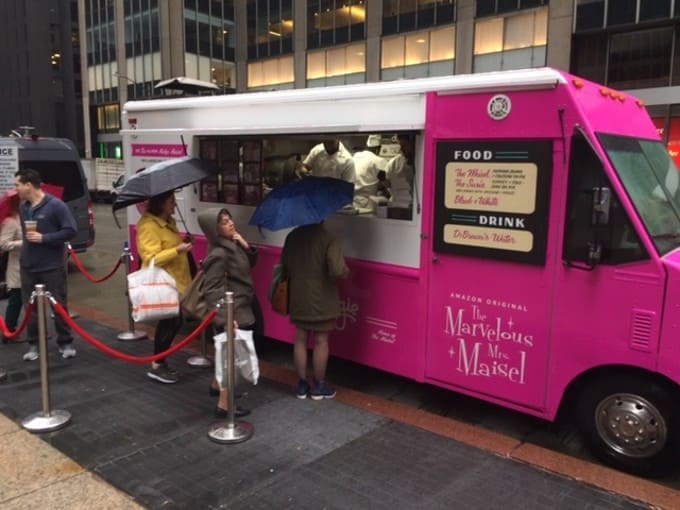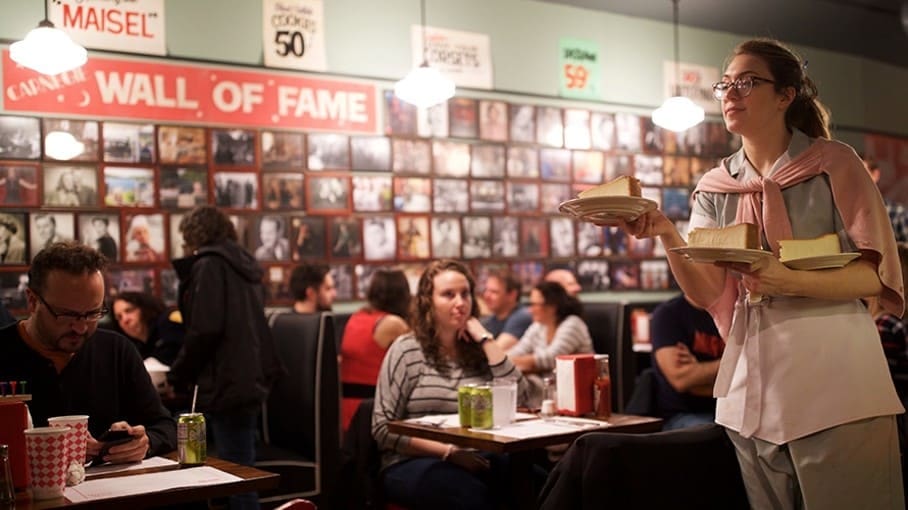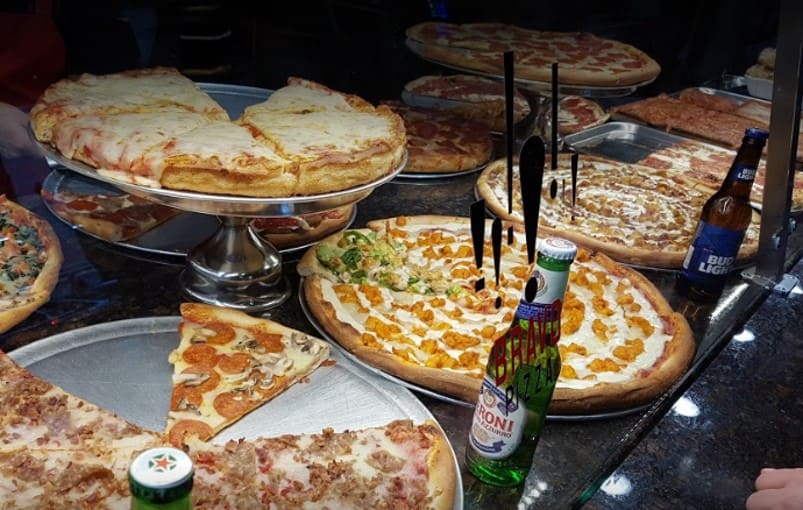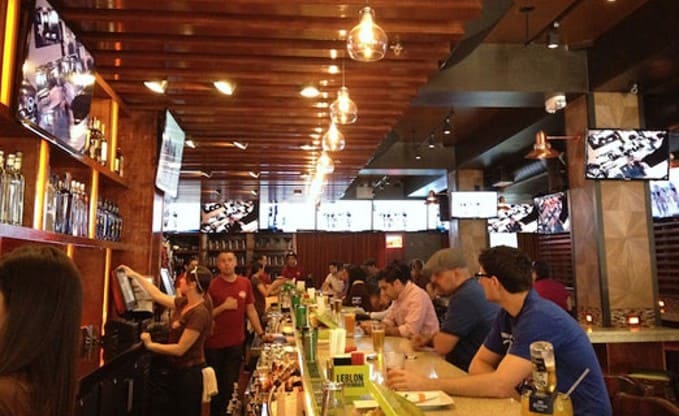About us
A team of innovative hospitality experts offering full-service restaurant consulting.


Overview of services
About A2Z Restaurant Consulting: we’ve been helping new and existing restaurants since 2009, powered by our decades in the restaurant industry.
Launching a new restaurant is a big undertaking, and sustaining it profitably is more so. So we tell you what you NEED to hear, not just what you want to hear — a yes man won’t help your restaurant a success. As a leading restaurant consulting company, our services include step-by-step progressions, plus collaboration with technology and marketing experts, and further restaurant business consulting to ensure your restaurant thrives.
Start-Up
We plan, strategize, research, and implement every step of the process from concept profitability evaluation to brand identity to Planning, set-up, branding, best practice training & systems, to promotion and launch.

Increase Profitability
Our process includes but is not limited to, in-depth analysis and evaluation of the brand concept, location, competition operations, and marketing strategy, and then a cost-profit evaluation of vendors and retail pricing.
Turn-Around
Our turnaround consulting employs most of the same things as our Increase Profitability but may require a complete rebranding of the concept, the menu, the services (such as events, catering, delivery), and vendor deals.
Brand Identity
The logo should be simple, memorable, and instantly recognizable, and translate well on signage, menus, flyers, and even interior design. That content and image are promoted across ads, social media, and the website.
Special Promotions
We’ve developed pop-up restaurants and food trucks for big brands (Amazon Prime) and food stands on city properties, to special events at local restaurants and bars, designing and planning atands for tradeshows.
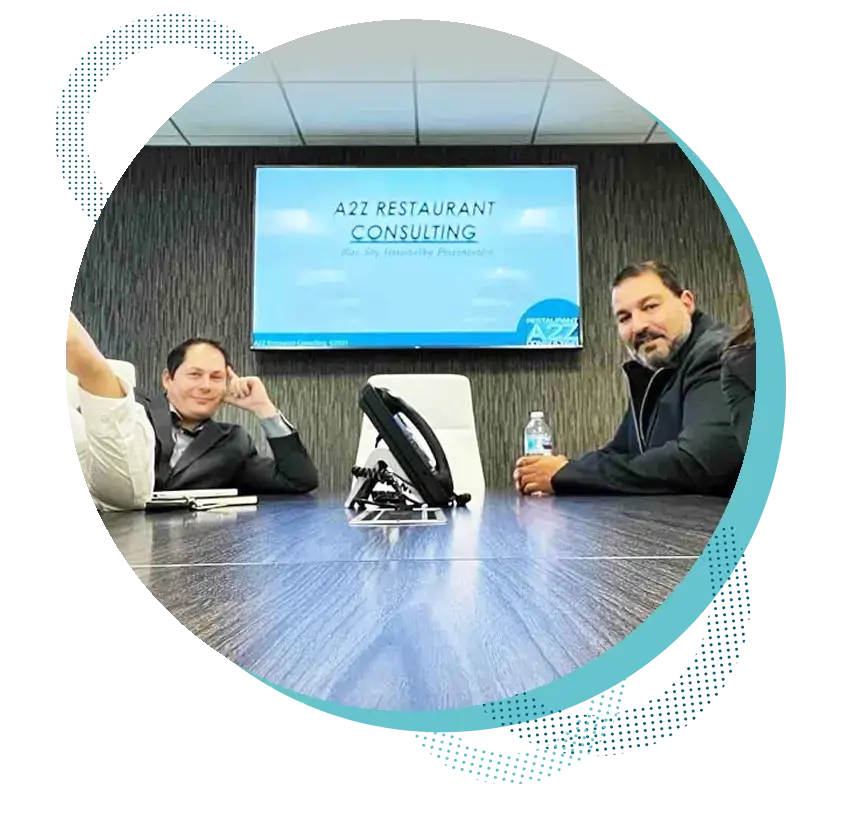


A PROVEN RECORD The Partners
The company employs experts in the hospitality field including leadership, restaurants, food, and sales. We consult at every step of the process.

About A2z Restaurant Consulting
DESIGN CONSULTATIONWe make you look good
Recent Projects- Some of our clients -

Marketing Bruce Dugan

Executive ChefLeon De La Cruz

Sr Project ManagerKatherine Oh
Some of Our Client Projects
Trends and Challenges in Today’s Restaurant Industry
The restaurant world is changing faster than a chef can fillet a salmon, and those shifts can’t be ignored if you want your doors to stay open—and profitable.
Customers are calling the shots.
Today’s diners expect more than tasty food; they want convenience, value, and experiences that blend the best of both in-person dining and digital ease (think: app-based reservations, online ordering, contactless payment). More than ever, consumers are picky with their loyalty—if you can’t offer a seamless journey from website to table, they’ll find someone who will.
A New Recipe for Success
Gone are the days of one-size-fits-all marketing. Restaurants now need targeted, personalized outreach—whether via savvy social media, text message reminders for loyalty perks, or Google review management. Location strategy isn’t what it used to be, either: operators are scrutinizing where footprints make sense, with delivery, ghost kitchens, and pop-ups on the rise, especially in cities like Los Angeles, New York, and Chicago.
Menu and Supply Chain Pressures
There’s also the squeeze on ingredient sourcing and cost control. With supply chain hiccups, inflation, and changing guest preferences (vegan, gluten-free, farm-to-table), agility is essential. Menu engineering is no longer just a “nice to have”—it’s the difference between red ink and record profits.
Opportunity Amid Change
Adapting may seem daunting, but this period offers an opportunity to build a stronger, more resilient operation—one that blends technology, brand storytelling, and a commitment to exceptional hospitality. The restaurants thriving today are those that embrace innovation, regularly refresh their concepts, and craft brands that authentically connect with their audiences.
Would you be ready to ride the current? That’s where we come in.
How Market Trends Shape Restaurant Operations
Staying ahead of market trends is the secret sauce behind every wise restaurant decision. For example, shifts in consumer preferences—think plant-based alternatives or a local, farm-to-table focus—can impact everything from your supply chain to your menu offerings.
When guests begin craving new flavors or healthier choices, menus need to bend, not break. That might mean sourcing from fresh vendors, updating ingredient lists, or fine-tuning portion sizes—all while keeping costs under control. On the supply side, global events or the rising popularity of specific cuisines (hello, Korean BBQ and poke bowls) can swing ingredient pricing, requiring quick pivots with suppliers.
Pricing decisions get trickier, too. Competitive menu costs rely not only on food costs and vendor deals, but on understanding what guests are willing to pay when the next food fad hits. Spotting these trends early—be it the oat milk wave at coffee shops or craft spirits in your bar program—lets you keep your offerings fresh and your numbers healthy.
What Are the Keys to Restaurant Success Today?
Staying ahead in the modern restaurant world is not just about great food; it’s about delivering a consistently memorable experience at every touchpoint. Here’s what sets thriving restaurants apart:
- Standout Menus: Create dishes your guests truly crave—think signature items that keep regulars coming back and new visitors curious.
- Value Your Diners Appreciate: Pricing is only part of the story. Actual value means quality ingredients, generous portions, and imaginative offerings that reflect your brand’s personality—and your guests’ preferences.
- Unmatched Guest Experience: Whether it’s dine-in, takeout, delivery, or even digital ordering, ensure your hospitality shines every time. Guests remember friendly service, attention to detail, and that little something extra.
- Build Strong Connections: From your local community presence to social media engagement, develop loyal relationships. Welcome feedback, reward regulars, and make customers feel seen, not just served.
- Evolve with Intention: Expand or adapt your locations with foresight—choose neighborhoods that fit your concept, experiment with new formats (pop-ups, food trucks, cloud kitchens), and use data to guide your growth.
- Empowered Teams: Empower your staff with training, clear expectations, and opportunities for advancement. When your team feels inspired and valued, it shows in every guest interaction.
In short, the restaurants excelling today do so by combining crave-worthy menus, genuine hospitality, continuous innovation, and a relentless focus on customer connection.
Brand Purpose & Core Values
What makes a restaurant brand resonate isn’t just great food—it’s the values and purpose that shine through every guest experience as a part of a cohesive brand strategy. Your brand purpose should be clear and meaningful, going beyond just serving meals to making a real impact in your community. Likewise, strong core values should guide every decision, from the kitchen to the front of house.
Key elements of a compelling brand purpose and memorable core values include:
- Consistency across every touchpoint: Whether guests interact with your team in person, browse your website, or follow your Instagram, your mission and values should always ring true.
- Personal touches: Strive for service that feels inviting, catering experiences to each guest, making regulars feel like family (think: the way you remember a favorite order or celebrate milestones).
- Transparency and integrity: Be up-front about where you source ingredients, your sustainability practices, and staff treatment. Today’s guests love brands that stand for what’s right—look at brands like Sweetgreen and Shake Shack, which weave their mission into every salad or burger.
- Community ties: Support local charities, source from nearby farms, host school nights, or organize cook-for-a-cause events. Roots in the community add credibility and loyalty.
- Clear, memorable messaging: Your logo, tagline, and online presence should instantly communicate what you stand for, from the front door to a Facebook ad.
In short, your purpose and values should do more than hang on a wall—they should flavor every aspect of your guests’ journey to better fit the clientele, inviting them back for experiences as much as for the menu.
Inspiring Teams and Creating Fulfilling Roles
Strong restaurant teams don’t just happen—they are shaped by purposeful leadership and meaningful work. One of the most effective ways to inspire your team is to clearly communicate the “why” behind your restaurant’s mission. Whether it’s fostering community, championing sustainable ingredients, or simply delivering exceptional hospitality, connecting daily tasks to a larger purpose brings energy and pride to the job.
Equally important is crafting roles that offer genuine satisfaction. Here are a few proven strategies:
- Empower team members: Give staff autonomy to make decisions and let their personalities shine, especially in guest interactions.
- Recognize achievements: Small gestures, shout-outs during pre-shift meetings, or “employee of the month” boards go a long way in showing appreciation.
- Invest in growth: Provide opportunities for training, cross-training, or even tastings led by visiting chefs to keep things fresh and foster skill development.
- Listen and respond: Solicit feedback regularly—your hosts and servers often have the best insights into guest expectations and operational improvements.
By blending purpose-driven leadership with genuinely rewarding roles, you’ll set the table for a team that’s not only inspired but also proud to be part of something special.
Steps to Create Consistently Positive Guest Experiences
Delivering a great guest experience isn’t just a box to check off—it’s the essential ingredient that turns casual diners into loyal fans. So, what does it actually take to nail it across dine-in, delivery, and everything in between?
-
Craft food that keeps them coming back: Serve up dishes people crave, with consistent quality—whether it’s burgers, bao, or budae jjigae. Taste travels, and so does your reputation.
-
Let your guests define value: What feels like “worth it” to your customer? Price, portion, and experience need to add up in their minds. Listen and adapt.
-
Standardize the experience, everywhere: Whether guests find you via online ordering, delivery, patio dining, or the bar, aim for a seamless experience in every interaction. Train staff, monitor feedback, and tweak processes so the house runs smoothly—no matter which “door” your guests use.
-
Foster genuine connections: Build relationships, not just transactions. Remember names, reward loyalty, and join the conversation both in person and on social media. Customers want to feel known and valued—make it personal.
-
Refresh (and right-size) your space: Regularly assess your footprint. Does it fit current trends, or could a new patio, ghost kitchen, or pop-up add to your reach? Strategic changes in layout or locations keep you top of mind and accessible.
-
Lead with purpose—inside and out: Inspire your team with a clear mission and meaningful work. When your staff feels invested, enthusiasm radiates, and guests feel the difference.
By approaching the guest experience as an evolving craft, not just a checklist, restaurants set the stage for loyalty and growth—regardless of how the world dines this year.
Strategies to Drive Same-Store Sales Growth
Restaurants looking to boost same-store sales need a game plan that blends operational savvy with proper guest focus. Real, sustainable growth comes from sharpening every aspect of the guest journey while keeping profitability top of mind. Ultimately, you want to fit the clientele better to convert happy guests into brand-ambassador evangelists. Here are practical strategies we help our clients put into action:
-
Menu Innovation That Sells: Refresh your offerings regularly, spotlighting seasonal ingredients and trending dishes. Don’t be afraid to take a page from the Shake Shack or Sweetgreen playbook—small, targeted menu innovations can create buzz and keep regulars coming back.
-
Optimize the In-Person and Digital Experience: Guests expect a smooth experience whether they’re walking in, ordering takeout, or clicking through your app. Streamline your online ordering, make your website mobile-friendly, and consider partnerships with delivery platforms like DoorDash or Toast to capture digital demand.
-
Personalized Marketing That Matters: Move beyond blanket deals. Use customer purchase data (from your POS or reservation systems like OpenTable and Resy) to deliver targeted promotions—think birthday offers, loyalty points, or “we miss you” deals for lapsed guests.
-
Focus on Operational Excellence: Consistency is king. Standardize service, train staff well, and monitor key metrics—speed-of-service, table turnover, and guest satisfaction scores—to maintain excellence day in and day out.
-
Right-Size Pricing and Value: Review your vendor contracts, portion sizes, and guest feedback often to balance perceived value with your margins. Test price points and bundle popular items for value-driven combos.
-
Build Lasting Guest Relationships: Loyalty is more than punch cards. Engage your community—host local events, spotlight ingredients from nearby farms, or offer family-style meals for neighborhood nights. Build a vibe that feels as welcoming as your living room (bonus points if you can make them laugh or tell a memorable story).
-
Continuous Feedback Loops: Use tools like Yelp, Google Reviews, and direct surveys to turn customer insights into actionable improvements. Thank guests for their feedback—publicly and privately.
Our approach is never “one size fits all”—we’ll help you find the blend of tactics that suits your concept, location, and audience, just like we’ve done for top restaurants across the region.
Building Meaningful Customer Relationships
At the heart of every thriving restaurant is a loyal base of guests who feel genuinely connected to your brand. Investing in those relationships isn’t just good hospitality—it’s good business. Strong connections with your customers generate repeat visits, turn casual diners into enthusiastic promoters, and encourage honest feedback that keeps you ahead of changing tastes.
When guests feel seen and valued—whether it’s remembering a favorite dish, a birthday, or a simple “welcome back”—they’re far more likely to recommend your place to friends, post about you on Instagram, and become regulars through thick and thin. Especially in today’s competitive market, fostering these ties helps transform your restaurant from just another option into their go-to destination.
Site Selection & Location Intelligence
Choosing the correct location can make or break your restaurant. That’s where location intelligence solutions come in. By harnessing advanced tools like Placer.ai, Esri, and StreetLight Data, we’re able to dig into demographic patterns, local foot traffic, and even competitor performance—giving you a data-driven foundation for every square foot you consider.
Whether you’re evaluating a bustling city corner or an up-and-coming suburban plaza, we help you answer questions like:
- Who walks by your storefront, and when?
- Are there untapped customer segments nearby?
- What does traffic look like—both on foot and by car—at different times of day?
- How do your potential locations stack up against each other (and the competition)?
Armed with this insight, you don’t just pick a location—you invest in the spot most likely to support your brand, attract your target guests, and optimize profitability from day one. This is more than guesswork; it’s strategic, measurable site selection that sets you up for long-term success.
Location Optimization: Expanding with Insight
Maximizing your restaurant’s footprint isn’t just about picking a spot with good foot traffic—it’s about informed, data-driven choices that set you up for sustainable growth. We combine hands-on experience with analytical rigor, diving deep into every variable that matters. That means blending classic location scouting with today’s technology, so you don’t rely on hunches or outdated market trends.
Here’s how we approach innovative site development and expansion:
- Comprehensive Market Analysis: We look closely at neighborhood demographics, spending patterns, and popular hangouts in the area. Whether it’s Main Street or a hidden gem, you’ll know what really drives local demand.
- Competitive Context: A side-by-side review of competition, from big chains to quirky independents, ensures you find the sweet spot where your concept fills a real gap.
- Traffic & Visibility: Using both historical data and modern footfall tracking tools—think Placer.ai or Google Maps mobility reports—we help you pinpoint locations with reliable customer flow.
- Cost/Benefit Evaluation: Lease terms, build-out costs, zoning restrictions, and vendor logistics—these all impact your bottom line. We break down which options make financial sense, balancing potential upside with upfront investment.
- Location Performance Projections: With tailored forecasts and simulations, you’ll see projected sales, occupancy rates, breakeven points, and how your concept could adapt as trends evolve.
Through all this, we keep your brand and menu identity front and center, so your restaurant’s expansion never feels generic. We aren’t just guessing—we’re planning, testing, and fine-tuning every step, making growth a calculated move rather than a gamble.
If you’re ready to explore new opportunities, optimize your current space, or plan a multi-unit roll-out, let’s use data—and a dash of industry know-how—to guide your next big leap.
Integrated Guest Experiences: In-Person Meets Digital
In today’s restaurant world, success is about connecting with guests wherever they are—whether that’s in your dining room or on their favorite app. The magic happens when the in-person touch, like a warm greeting or personalized service, pairs seamlessly with a user-friendly online experience.
Here’s what that looks like in practice:
- Consistent branding: From the logo on your menu to your website or Instagram feed, guests should feel your vibe is unmistakable, no matter how they find you.
- Smart tech integrations: Simple online reservations, digital waitlists, and intuitive ordering systems (think Toast or OpenTable) make every interaction hassle-free for your guests.
- Personalized communication: Use customer data to tailor email specials, loyalty offers, or even birthday surprises that encourage repeat visits.
- Unified feedback channels: Enable easy reviews and keep communication open—whether that’s a comment card on the table or a quick survey sent after a DoorDash delivery.
- Staff training: Your team should be equally at home handling an in-person guest or an online request; consistency builds trust and loyalty.
With these strategies, your guests get a streamlined, welcoming experience at every touchpoint—making your restaurant the place they come back to (and talk about) again and again.
The Power of Personalized Marketing
Personalized marketing is the secret ingredient that keeps your guests coming back for more. In today’s world, diners expect more than just good food—they want to connect with your restaurant on a personal level, whether they’re inside your dining room or ordering from their couch.
That means tapping into data and digital tools to reach your customers where they are, with messages and offers that actually matter to them. Maybe that’s a birthday discount text, a loyalty program tailored to regulars, or social media ads that highlight a menu item they’ve loved before. The point is: know your audience, communicate authentically, and show them you value their business.
- Creates Lasting Impressions: A simple “we miss you” email or an invite to an exclusive tasting can remind customers why they loved your place in the first place.
- Drives Repeat Visits: Targeted incentives—think Starbucks Rewards or Chipotle’s app—help nudge guests back through the door.
- Builds Brand Connection: When your restaurant reflects your guests’ preferences and values, they’re more likely to become advocates.
Personalized marketing isn’t just a buzzword; it’s a proven way to inspire customer loyalty and keep your tables full, whether virtually or in person.
Serving Up Craveability and Value Customers Notice
So, how does a successful restaurant consistently deliver dishes customers crave—while ensuring everyone leaves feeling they’ve gotten their money’s worth? It’s all about nailing the details across food, experience, and connection.
-
Start With Unforgettable Food
Develop standout recipes that are both distinctive and consistently executed. Use fresh, quality ingredients—the kind your chef would argue about at the farmer’s market. Adapt your menu based on feedback and keep signature items relevant to your neighborhood’s tastes, whether it’s classic comfort fare or unexpected flavor twists. -
Understand What Value Means to YOUR Guests
Value goes beyond price. Listen carefully to what your patrons appreciate: is it generous portions, swift takeout, or thoughtful dietary options? Reflect that understanding in your menu design, portion sizes, bundled offers, happy hours, and more. Remember, your guests define value—so make a habit of asking and evolving. -
Consistency is King
Guests return for reliability as much as for excitement. Every touchpoint—from dine-in to delivery—should have the same quality, hospitality, and attention to detail. Regular team trainings and clear standard operating procedures transform your intentions into everyday reality. -
Foster Genuine Relationships
The best restaurants don’t treat customers as transactions. Build rapport through personal touches, loyalty programs, and prompt, caring responses to both praise and problems. Encourage staff to remember names and preferences where possible—this turns first-timers into regulars. -
Stay Flexible and Modern
Don’t let old patterns anchor your restaurant. Evaluate what’s working (and what isn’t) and be willing to pivot. Expand responsibly, exploring new channels like food trucks, pop-ups, or ghost kitchens if they suit your brand and market. Keep an eye on industry trends and align them with your unique strengths. -
Engage and Motivate Your Team
Your staff are the linchpin of craveable food and excellent service. Share your mission clearly, offer meaningful growth opportunities, celebrate wins, and encourage creativity. A passionate, motivated team delivers experiences guests remember.
By focusing on these fundamentals, you craft more than just food—you create a restaurant guests are eager to return to.
How consumer behavior and tech trends are shaping today’s restaurants
It’s no secret: modern diners are a whole different breed than they were a decade ago. Thanks to evolving tastes, the rise of delivery apps like DoorDash and Uber Eats, and ever-present smartphones, guests hold restaurants to new standards—lightyears ahead of what used to cut it.
What does that look like in practice? Guests expect creative menus, lightning-quick service, and seamless digital experiences—mobile ordering, contactless payment, maybe even a quick Instagram of their latte art. Restaurateurs can’t afford to stand still; customer expectations are moving fast, and technology is rewriting what “convenience” and “value” mean every year.
From building a memorable in-house experience to competing with ghost kitchens and food trucks, staying relevant now means adapting to shifting consumer demands and the latest tech tools.
AI-Powered Personalization: Unlocking Smarter Restaurant Marketing
In today’s restaurant landscape, standing out isn’t just about mouthwatering dishes—it’s about building genuine connections with diners. That’s where AI-powered personalization steps in, giving restaurant owners an innovative edge over the competition.
By analyzing customer preferences, order history, and dining patterns, AI helps you tailor marketing messages, promotions, and menu suggestions to match each guest’s tastes. Imagine automatically offering a frequent burger fan a limited-time gourmet burger special, while inviting a vegan regular to your new plant-based tasting menu—delivered right to their inbox or loyalty app.
The result? Higher engagement, more repeat visits, and marketing that actually feels helpful rather than generic. Restaurants—from global chains like Panera to neighborhood bistros—are using these AI-driven insights to:
- Send personalized email campaigns with special offers based on guests’ favorite items.
- Recommend dishes or combos at the point of ordering, both in-house and online, boosting average check size.
- Identify at-risk customers and win them back with targeted incentives.
In short, AI-powered personalization lets restaurants speak directly to what each diner craves, making your marketing more effective—and your guests more loyal.
Leveraging AI & Analytics for Restaurant Success
The restaurant industry is changing fast, and intelligent use of data can be the difference between just getting by and serious growth. AI and advanced analytics give restaurant owners and operators new ways to streamline operations, connect with guests, and boost their bottom line.
Here’s how you can harness these tools:
- Smarter Inventory Management: AI-driven systems like Toast or 7shifts can predict supply needs based on historical sales, seasonality, and even local events, helping you cut back on waste and avoid running out of essentials on a busy Friday night.
- Personalized Marketing: Platforms such as OpenTable and Resy use analytics to help restaurants tailor offers and promotions to customer preferences, increasing repeat visits and boosting loyalty.
- Dynamic Pricing and Menu Engineering: By analyzing sales data, you can pinpoint bestsellers, slow movers, and high-margin items. AI can even suggest menu tweaks or pricing adjustments to improve profitability.
- Optimized Staffing: AI tools assess sales patterns and make scheduling recommendations so you’re never over- or under-staffed—saving you money and improving service quality.
- Enhanced Guest Experience: Chatbots and AI-powered reservation systems streamline booking and guest communication, while sentiment analysis tools sift through reviews to give real-time insight into what guests love (and what needs work).
With AI and advanced analytics as part of your toolkit, you’re better equipped to make decisions grounded in data, not hunches—setting your restaurant up for sustainable, profitable growth.
Data & Analytics: The Foundation for Success
In today’s fast-paced retail and restaurant landscape, taking an enterprise-wide approach to data and analytics isn’t just a trendy buzzword—it’s the foundation for making wiser decisions at every turn. Whether you’re running a cozy neighborhood bistro or rolling out a national chain, unified data management gives you eyes and ears on everything from inventory to marketing.
Why does this matter? When your point-of-sale, reservations, marketing, and supply systems talk to each other, you spot trends early, reduce food waste, and deliver the experience customers expect (think Starbucks’ loyalty app or Sweetgreen’s tailored menus). Beyond just collecting numbers, this strategy empowers your team to act on insights—forecasting busy weekends, preparing staffing plans, and ensuring your next menu promotion really sizzles.
In short, a holistic data strategy means you’re not guessing—you’re steering your operation with confidence, efficiency, and an edge the competition wishes they had.
Ready? Let’s discuss your project

